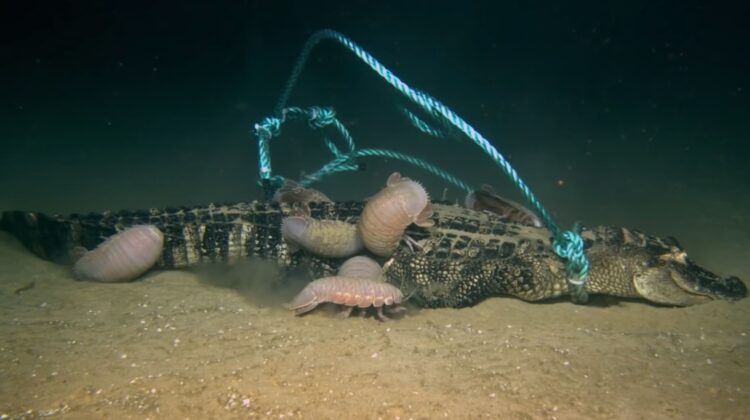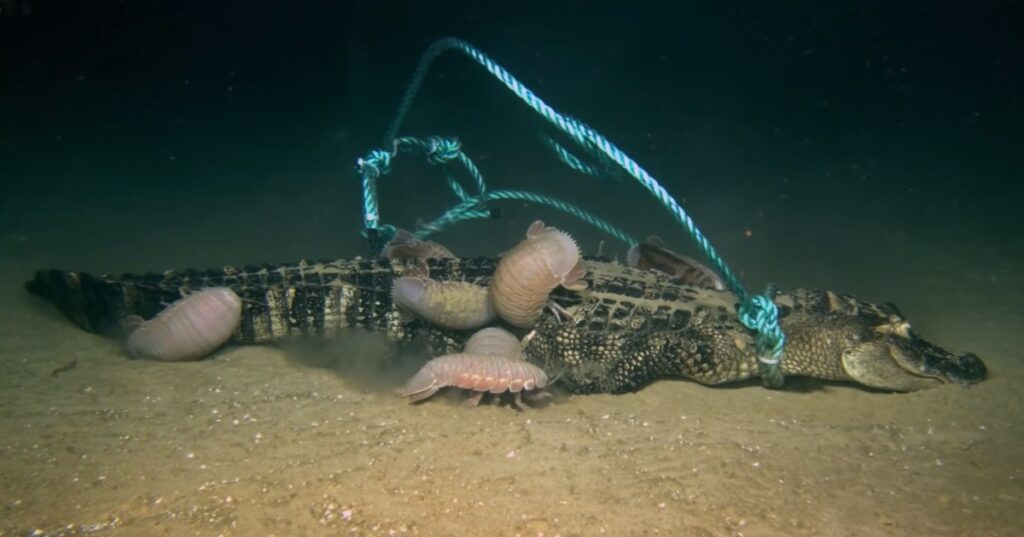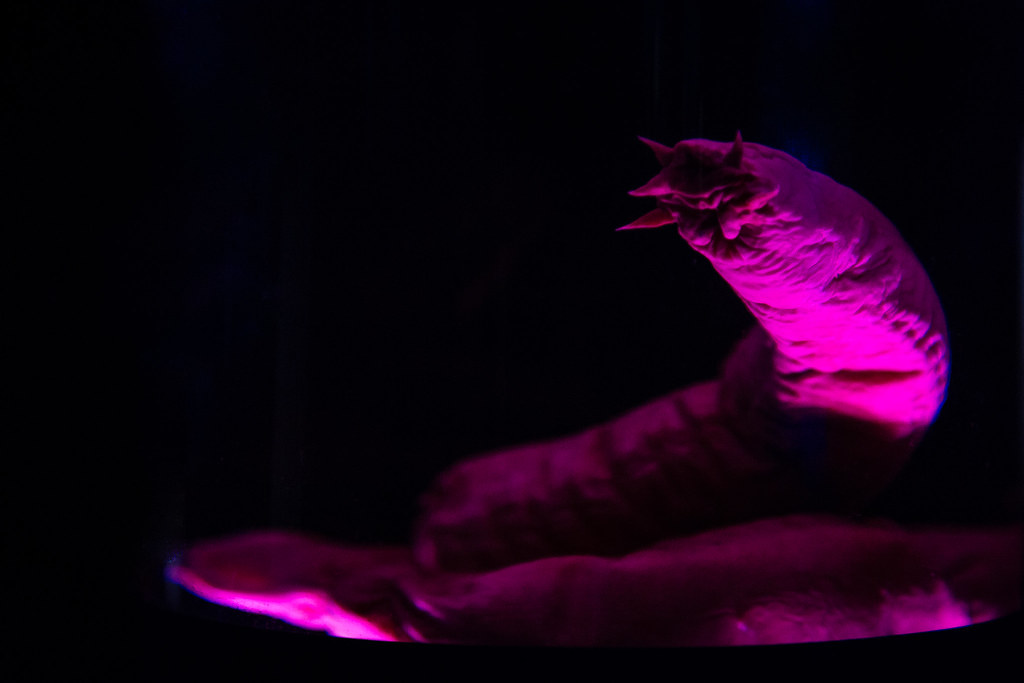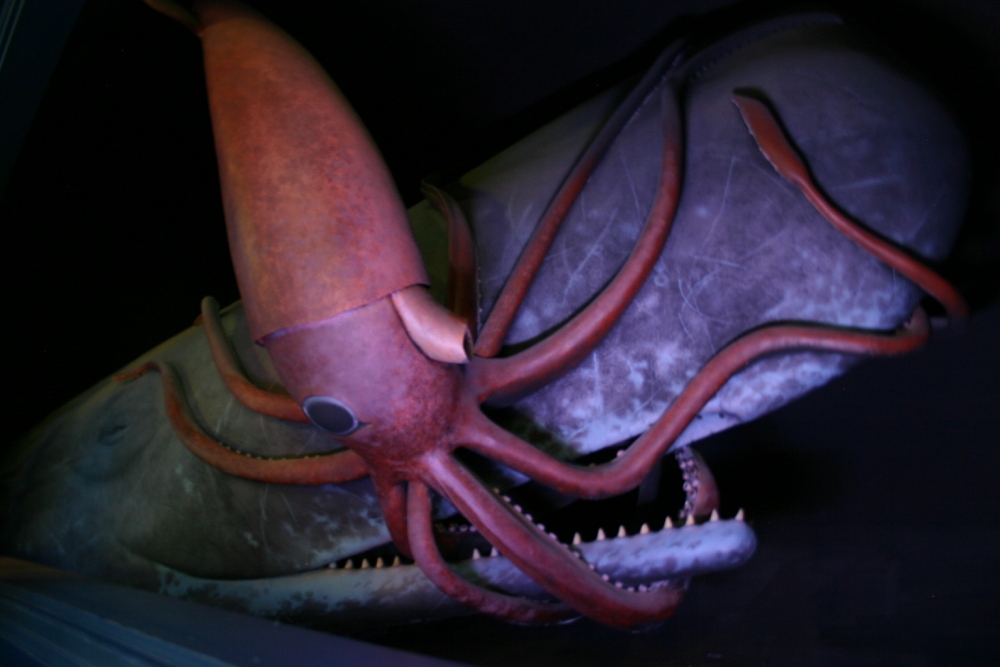
A new attempt to discover what type of life exists on the bottom has sparked speculation about the prospect of a genuinely massive beast lurking in the ocean’s dark depths. Is it a massive shark or a massive squid? Or something we don’t even know what to call it?

So far, we’ve only explored around 5% of the world’s seas, which cover 70% of the planet’s surface. Humans have always been fascinated by the secrets that lie under the waves.
Marine scientists Craig McClain and Clifton Nunnally of the Louisiana Universities Marine Consortium conducted the Great Gator Experiment to get a better understanding of what’s going on under the waves, and the results are intriguing to say the least.
Three dead alligators with weights linked to them were sunk as part of a banquet for unknown bottom critters. They were interested to see how the monsters living on the seafloor would consume their bodies.
“We dropped three dead alligators at least 6,600 feet down in the Gulf of Mexico for 51 days to examine the food chain deep below the water,” stated Clifton Nunnally of Louisiana University.
The gators struck the seabed and settled among the disturbed dust after descending to the unknown depths of the ocean.
What happened next was a complete shock.
Within 24 hours of hitting the ocean below, the first gator was devoured. Giant isopods, which Nunnally compares to deep-sea vultures, greeted it with open arms. The feast was then joined by additional scavengers such as amphipods, grenadiers, and an unidentified black fish. The isopods pulled the reptile apart faster than the experts had anticipated, devouring it from the inside out.
The second alligator was consumed over a longer period. Its skeleton, which had a reddish color, was all that left after 51 days.
“That one took us by surprise.” “On the carcass, there was not a single scale or scute remained,” McClain told Atlas Obscura. After that, the skeleton was delivered to Greg Rouse, a marine researcher at Scripps Institution of Oceanography, for additional examination.
Rouse discovered that a new species of bone-eating worms of the Osedax genus had reduced the gator to shackles of bone. According to McClain, this is the first time an Osedax member has been discovered in the Gulf of Mexico. When the newly acquired DNA was matched to that of previously identified Osedax species, the researchers recognized they had discovered a new species of the genus.

Despite the unexpected finding of a new Osedax species, the scientists were most perplexed by the third alligator. When they went to the spot where the third gator was dumped, all they saw was a large pit in the sand — the animal had disappeared completely. The crew then explored the surrounding region, but no sign of the alligator could be seen. They did, however, discover the gator’s weight, which was approximately 10 meters distant from the scene.
This indicates that the predator that snatched the gator was large enough to swallow it whole and drag the associated weight a long distance. The crew believes the monster is either a big squid or a giant shark that has yet to be spotted. “I have yet to uncover a squid capable of devouring an entire alligator, and I don’t want to be on the ship if we do.”
The results astounded the two researchers, but they were also pleased with the experiment. The following time, they intend to execute a whale fall.

Will the strange predator turn out to be the Kraken, a famous sea creature in Scandinavian folklore with a cephalopod-like appearance? Or is there something else we haven’t considered? Well, we’re looking forward to finding out.
